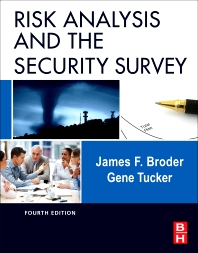There are fewer than 3,000 dealer-owned central stations in the industry, but there are tens of thousands of security dealers operating without a central station who offer monitoring through the use of third-party central stations. They depend on their third-party central stations for reliable, professional and reputable service to subscribers. Often they also depend on them to act as business partners, keeping them up-to-date with emerging technologies and services.
But when it comes to the emerging services of hosted and managed access control, some central stations think it’s the dealers who aren’t keeping up-to-date.
“It is a very good service with a strong value proposition, but it just hasn’t been able to get real traction in the industry,” observes Mark Matlock, senior vice president at United Central Control Inc., San Antonio.
On one hand, central stations want to provide new RMR-generating services to their dealers. But on the other, they can’t cost-effectively implement those services until a sufficient number of dealers are demanding them and until certain platforms begin to emerge as leaders.
“This service has eluded us for many years. On three different occasions we were an eyelash away from offering this service and every time something fell through,” says Mark Matlock, senior vice president at United Central Control Inc., in San Antonio. “We’re working right now with AMT to get a solution to our dealers, but we’re probably about three months away.” Saint Paul, Minn.-based AMT works with central stations as well as data centers to create software for security systems running as a service (SaaS).
Many of the central stations SDM spoke with about hosted and managed access control services said there just isn’t a strong demand at this time.
“Even when we were close to offering the service, we had a really tough time trying to get dealers interested. Much of that is fear of the unknown, but we even had a hard time getting our more ‘flexible’ dealers interested,” Matlock attests. “I don’t quite understand it.”
At third-party central station C.O.P.S. Monitoring, Williamstown, N.J., “We’ve been looking at managed access for some time now, but the challenge with a third-party monitoring center is we’re not quite sure where the jumping off point is,” explains David Smith, director of marketing and communications. “It’s difficult to find out which product to support because we have to maintain the platform that maintains the access control systems and also train our people on them.”
Smith, who feels these services could be easily implemented, says there are some differences but many synergies between managed access and alarm monitoring. “We would definitely entertain doing this. It’s just that the dealers that want it may need it for one or two accounts. It’s not economical for us to train and maintain software for one or two accounts,” he explains.
What Components Comprise the Service Offering?
Just like with hosted and managed video services, there are a number of configurations of access control as a service. One of the few third-party central stations SDM found that offers it, Acadian Monitoring Services, Lafayette, La., has both hosted and managed offerings. “We host the entire access control database through the Internet. We also manage the subscriber’s database and process all add/delete/change requests for users on the system as well as set door schedules, and monitor for door conditions such as a forced or held condition. Door conditions can be video-verified with a camera tied to a specific door,” describes Kenny Savoie, Acadian’s director of monitoring services.
Another, SentryNet, with locations in Greenville, Miss. and Pensacola, Fla., also offers both hosted and managed access control, but Michael Joseph, vice president of operations, says only a few of its dealers have adopted it.
“Quite frankly it has not been the latest blockbuster service we thought it would be. As a third-party station we are kind of caught in the middle. We can only analyze, package, and promote a service for generating RMR. We do a good job supporting our dealers and bringing them new opportunities for generating RMR, but most are very slow to adopt new technologies and services,” he admits.
Joseph says most of the dealers using SentryNet’s service are using hosting only and managing the subscriber side of it themselves. But he believes the managed service offering is actually a better solution than hosted service.
“The difference between hosted and managed is that when SentryNet is managing the system we are responsible for all the services associated with access control. We add and delete cards and users, we can monitor and dispatch to appropriate circumstances and we are 24/7,” Joseph explains. “The drawback to having us only host a system is that we leave the maintenance and administration of the system, subscribers and end users to the dealers. The occasional incident in the middle of the night or on a weekend then requires an on-call tech to react.”
In addition to hosting and managing, there is also remote monitoring.
“From my perspective monitoring implies that we respond to emergency or not normal circumstances similar to alarm conditions, including granting emergency access or emergency denials or removals. That may include deleting terminated employees, creating or allowing emergency entrance to law enforcement,” Joseph describes. “Remote management would imply routine addition and deletion of cards and employees; updating open and close schedules in the system and printing and reviewing reports.”
The Technology & Operations Side of It
The access control equipment brands that dealers sell and install steer the central stations towards the software platform that will support the access control services. For example, Acadian Monitoring Services offerings are compatible with HID Edge and VertX technology. “We use AMT’s software platform to handle all hosting and management features and can monitor door conditions using Sureview Systems’ Immix automation platform,” Savoie describes.
SentryNet supports the HID VertX solution offered through SecuriCo Corp., Burnsville, Minn. “It is a very robust and flexible system using a combination of remote HID equipment offerings. The VertX panel is the main controller and it will support a full range of onsite hardware,” Joseph describes.
To get subscriber accounts set up, dealers need to purchase compatible door hardware and controllers, “flashed for AMT’s software,” Savoie explains. “Acadian will assign them a secure login and password for our hosted Web portal. They then have the option of branding their Web portal and can partition their various accounts.”
If the dealer or customer is managing the account, Savoie says, all database information is input by them. If Acadian is managing the database, then the dealer or subscriber must provide items such as cardholder lists, door schedules and monitoring protocols.
SentryNet adds that it requires a static IP address on site. Dealers will need to provide the correct information about what peripherals will be connected and what hardware will be controlled.
“In addition to the hardware information we need to know what the subscriber expectations will be with regard to dealer and/or central station participation. Will we be monitoring for exception reporting, alarm reporting, granting or denying access or simply hosting the service and maintaining the database for backup and updates?” Joseph asks. “We have dealers providing all the different levels of service.”
The Central Station Dynamic
Within third-party central stations that offer hosted and managed access control, the impact has been minimal on operations.
“The majority of the impact on the central station occurs in the data entry department where the accounts are created, built and maintained,” Joseph says. “The monitoring activity is a little specialized but our senior operators are well-trained and the services are not that far out of the norm.”
Emphasizing the positive aspect that these services are another source of RMR for both central stations and dealers, Savoie’s perspective is that it is an easy-to-learn and easy-to-use system, “so minimal operator training is required and it has not changed our staffing requirements. Because we require an integrated camera to monitor door alarm events, these sites are handled by our video analysts who all have some sort of law enforcement or military background,” he states.











